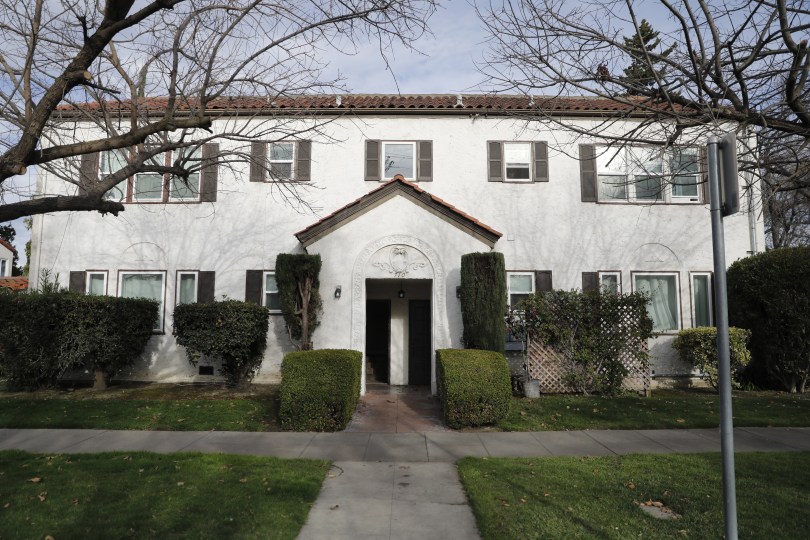The concept of allowing up to fourplexes on a single-family lot is nothing new to San Jose or even most cities across the country. According to a tally from the housing nonprofit SV@Home, San Jose already has about 5,500 of these housing types sprinkled across the city — most of which were built before World War II and the country’s shift toward suburban sprawl.[spacer height=”20px”]
BY: Maggie Angst┃San Jose Mercury News
PUBLISHED: January 26, 2021
After Sacramento recently took the bold step toward becoming the first city in California to eliminate traditional single-family zoning, some San Jose housing advocates and residents hope the capital of Silicon Valley can build off of the momentum.
San Jose is considering a similar zoning shift that would allow up to four dwelling units on a single-family lot — a concept that San Jose refers to as “opportunity housing.”
Living in a neighborhood where each lot has one home and a surrounding yard is an ideal deeply embedded into American life, and single-family zoning is what ensures cities uphold that standard. But over time, coupled with racially-explicit exclusionary housing practices, single-family zoning restrictions have often perpetuated the exclusion of lower-income people and people of color from high-opportunity neighborhoods.
Across the nation, it is illegal to construct anything other than a single-family home on 75% of America’s residential land. In San Jose, that’s the case with about 94% of its residential land.
But as city and state officials across the nation grapple with growing economic inequality and worsening housing shortages, many are beginning to question the merits of such restrictions and view densifying single-family neighborhoods as a promising way to boost their housing stock, in particular, “missing middle” housing for moderate-income earners.
“There are two goals here — addressing racial and economic exclusion that’s historically occurred for more than 80 years … and providing opportunities for people who want to live in a single-family environment and go to those schools but who can’t afford to buy a single-family house,” said Michael Brilliot, San Jose’s deputy director of citywide planning.
City officials in San Jose and Sacramento say that many residents wouldn’t notice much of a difference in their neighborhoods. They both plan to maintain similar height restrictions, limit how close a house can be to the property line and ensure historic protections are in place.
Still, the proposed changes — though not a new concept for cities across the country — stoke fear in homeowners who worry about decreasing property values, parking shortages and an overall knock to their quality of life and neighborhood character.
The cities of Minneapolis and Portland and the state of Oregon all passed regulations that eliminated traditional single-family zoning in recent years. A similar bill was introduced in the California Legislature last year but died. With unanimous approval from the City Council on Jan. 19 to move forward with its plan, Sacramento could be the first city in California to formally make the shift citywide.
Meanwhile, in San Jose, how the city will proceed with a similar proposed zoning change remains to be seen.
The San Jose City Council in 2019 instructed its 2040 General Plan Task Force to explore allowing duplexes, triplexes and fourplexes on single lots solely in residential neighborhoods around major transit corridors. But this summer, the task force, instead, overwhelmingly voted to recommend that the city consider the zoning shift in all residential neighborhoods across the city.
The council is expected to decide in June whether to move forward with the citywide recommendation — or keep it limited to neighborhoods around transit corridors. If the council adopts either proposal, it will not result in an immediate rezoning. City staff anticipates spending the following 18 months or so gathering public feedback, conducting environmental and displacement studies and creating design guidelines before the council would take a final vote at the end of 2022.
It’s unclear at this point which direction the council will tilt, but with the newly-established labor-backed majority in power, the citywide recommendation likely has a greater chance at moving forward than it has at any other point throughout the past decade.
San Jose Mayor Sam Liccardo supports densifying single-family neighborhoods around transit corridors but not citywide. Even so, he said, he plans to “keep an open mind” in the coming months.
“I don’t take the need for densification lightly, but I’m also aware that if it’s not done in collaboration with the community then it can really backfire and a lot of our urbanist goals and objectives can really be undermined,” Liccardo said.
Roberta Moore, a South San Jose resident who sits on the General Plan Task Force, hopes the City Council stands by the mayor and sticks to only densifying the transit corridors. Moore has a long list of concerns if the changes are rolled out citywide, including overwhelming aging infrastructure in historic neighborhoods, putting more pressure on the city’s “already underfunded services” such as police and decreasing property values due to changing a neighborhood’s character.
“This is the unplanning approach to planning,” Moore said. “Don’t you think people who work hard to afford a certain lifestyle should be able to expect to get it? This would completely change that.”
The concept of allowing up to fourplexes on a single-family lot is nothing new to San Jose or even most cities across the country. According to a tally from the housing nonprofit SV@Home, San Jose already has about 5,500 of these housing types sprinkled across the city — most of which were built before World War II and the country’s shift toward suburban sprawl.
Michael Lane, state policy director for the public policy nonprofit SPUR and a South San Jose resident, characterized the proposed zoning changes as a “shift back to old urbanism” and “a traditional approach that’s more sustainable for our families and for our environment.”
“We know that when that becomes a bidding process, wealthier households will be able to pay those higher rents and then they’ll cannibalize the existing housing stock and it makes it even harder for lower-income working families to be able to live in San Jose,” said Lane, who supports a citywide shift. “This will only create more opportunities for both homeowners and prospective residents who would like to live in and enjoy the amenities of these neighborhoods.”

